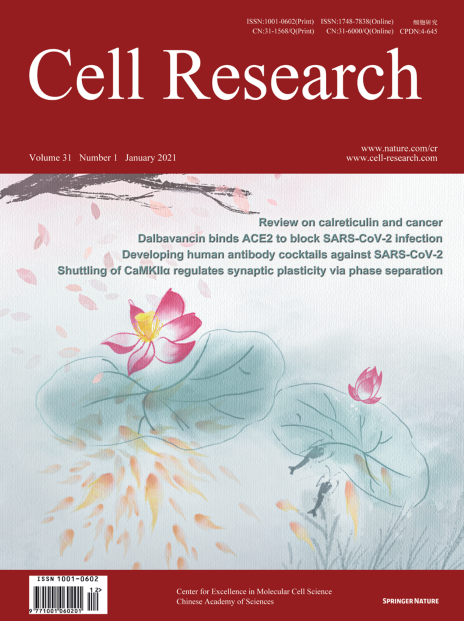
Advanced Search
Submit Manuscript
Advanced Search
Submit Manuscript
Volume 31, No 1, Jan 2021
ISSN: 1001-0602
EISSN: 1748-7838 2018
impact factor 17.848*
(Clarivate Analytics, 2019)
Volume 31 Issue 1, January 2021: 5-16
Calreticulin and cancer
Jitka Fucikova1,2 , Radek Spisek1,2 , Guido Kroemer3,4,5,6,7,* , Lorenzo Galluzz8,9,10,11,12,*
1Sotio, Prague, Czech Republic; 2 Department of Immunology, Charles UniversityCalreticulin (CALR) is an endoplasmic reticulum (ER)-resident protein involved in a spectrum of cellular processes. In healthy cells, CALR operates as a chaperone and Ca2+ buffer to assist correct protein folding within the ER. Besides favoring the maintenance of cellular proteostasis, these cell-intrinsic CALR functions support Ca2+-dependent processes, such as adhesion and integrin signaling, and ensure normal antigen presentation on MHC Class I molecules. Moreover, cancer cells succumbing to immunogenic cell death (ICD) expose CALR on their surface, which promotes the uptake of cell corpses by professional phagocytes and ultimately supports the initiation of anticancer immunity. Thus, loss-of-function CALR mutations promote oncogenesis not only as they impair cellular homeostasis in healthy cells, but also as they compromise natural and therapy-driven immunosurveillance. However, the prognostic impact of total or membrane-exposed CALR levels appears to vary considerably with cancer type. For instance, while genetic CALR defects promote pre-neoplastic myeloproliferation, patients with myeloproliferative neoplasms bearing CALR mutations often experience improved overall survival as compared to patients bearing wild-type CALR. Here, we discuss the context-dependent impact of CALR on malignant transformation, tumor progression and response to cancer therapy.
https://doi.org/10.1038/s41422-020-0383-9